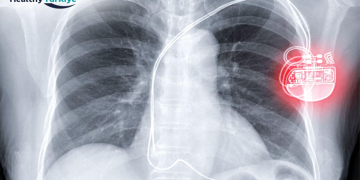An ultrasound or sonography is an imaging test that uses sound waves to produce images of tissues, organs, and structures inside your body. Unlike X-rays, Madison ultrasound does not use radiation, making it safe to check the development of a baby during pregnancy. An ultrasound can also be a diagnostic procedure to view and provide valuable information about internal body parts.
Why would I need an ultrasound?
Your doctor may recommend an ultrasound for several reasons, including to:
- View the uterus during pregnancy and monitor the baby’s health
- Examine internal parts of the body, including the bladder, kidneys, liver, heart, and blood vessels.
- Guide a needle for biopsy
Preparing for an ultrasound
Most ultrasound examinations require no preparation, but there are a few exceptions. For example, your healthcare provider may instruct you not to eat or drink for a gallbladder ultrasound for a certain period before the exam. Other tests, such as a pelvic ultrasound, require a full bladder. You need to drink water before the exam and not urinate until the procedure is over. Your healthcare provider will let you know much water to drink before the ultrasound.
If the ultrasound involves a child, they may need additional preparation. Your doctor will give you specific instructions to follow, whether you are scheduling an ultrasound for yourself or your child.
What happens during an ultrasound?
On the day of your appointment, it is best to wear loose clothing for your provider to access a specific body area easily. Your doctor will ask you to remove jewelry before the ultrasound, so leaving valuables at home is a good idea. You may need to reposition some of your clothing or remove all your clothing and change it into a gown.
You will lie on an exam table, and your doctor will apply gel to the skin over the examined area. The gel prevents air pockets which can block sound waves that create images. It is water-based and is, therefore, easy to remove from skin and clothing if necessary. Next, your provider presses a small hand-held device against the area being studied and moves it as needed to capture images. The device transmits sound waves into your body, collects echoes, and sends them to a monitor, which creates the images.
Sometimes the transducer is attached to a probe and inserted into a natural opening in your body. Examples of ultrasounds done inside the body include transvaginal ultrasound, transrectal ultrasound, and transesophageal echocardiogram.
What are the potential risks?
There are no known risks to having an ultrasound; it is a safe procedure that uses low-power sound waves. An ultrasound uses no radiation and therefore offers a safe way of checking your unborn baby’s health.
Although ultrasound is a valuable tool, it has some limitations. Ultrasound is ineffective at imaging body parts hidden by bone or that have gas; these include the lungs or head. That is because sound waves don’t travel well through bone or air. An ultrasound might also not show objects located deep in the human body. Your healthcare provider may use other imaging tests such as X-rays, CT, or MRI scans to view these areas.
If you have further questions about an ultrasound, consult your doctor at Physicians for Women – Melius & Schurr.














